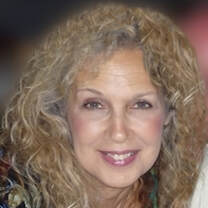 As those of you know who have followed our work with Interfaith Partners of South Carolina, we have for a number of years partnered with the governor's office in proclaiming January as South Carolina's Interfaith Harmony Month. This year due to the Covid virus we were unable to have the in person meetings and events which have grown ever more popular and diverse over the years and instead developed a number of wonderful virtual meetings and presentations which were very successful. In some ways it was a great blessing and that many events which were local for some and would require a fair amount of travel for others became equally available to all. As a part of my contribution to the events I was able to conduct a couple of video interviews with real powerhouses in the interfaith movement. Dr. Barbara Fields serves as the Executive Director of the Association of Global New Thought which also engages in a lot of interfaith work. Perhaps the most famous aspect of their work is the annual Gandhi/King Season of Peace which takes place each year beginning January 30th and runs 64 days until April 4th. She was program director for the 1993 Parliament of the World’s Religions. For more information please visit WWW.AGNT.ORG We had a lovely time, and to watch this nearly one hour interview click on Dr. Fields image The secondary interview was with Dr. Larry Greenfield, Pres. Emeritus of the Parliament of World Religions. Dr. Greenfield has been involved in many interfaith initiatives over the years as well as an ongoing commitment to the Baptist movement with which she has been affiliated for many many years. Our interview also ran nearly to one hour in length and I believe we covered some exciting topics which I'm anxious to share with you. To watch this interview click on Dr. Greenfield's image
0 Comments
Thriving in the Crosscurrent: Clarity and Hope in a Time of Cultural Sea-change by Jim Kenney7/28/2018 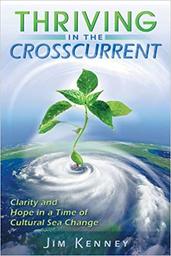 “Imagine an ocean moment: two waves converging in the same time and space. One is powerful but subsiding, the other just gathering momentum and presence but not yet cresting. At the moment of their meeting they are nearly equal in amplitude and influence. As they cross, who can say which is rising, which descending? In that moment only the chaos of wave interference exists. Now imagine modernity as a powerful wave of cultural values that crested half a century ago and is slowly beginning to subside. At the same time, a second wave of countervailing values rises equally slowly, building until its crest begins to rival the declining energy of the older wave”. This central image from James Kenney’s book offers a very clear and hopeful metaphor for the chaotic times in which we find ourselves. I became aware of this important and timely book through the Association for Global New Thought’s online salon “New Thought on the News”, as the book’s central concept forms the basis of the dialogue as well as the lens through which each monthly topic is viewed. I have been involved in the Unity movement for a number of years now and Unity is one denomination of New Thought, along with Christian Science, Centers for Spiritual Living, Agape and others. All New Thought affiliates place the importance of consciousness foremost in producing the changes we wish to manifest in our lives and in the world. At the extreme end of this understanding there are those who believe that it is best to just turn off the news, turn inward with prayer and meditation, forwarding the claim that ours is not to make the world right but to see it rightly. At the other end of the spectrum are those who are wanting to abandon this passive approach and get involved in direct action, perceiving evil in the world and picking up the gauntlet. There is a middle ground, where one remains engaged with the world, keeping up on current affairs and responding to a duty to “Stand Up, Speak Up, Show Up” in the words of Unity Minister Rev. Darlene Strickland. In this middle ground we do not pick arguments, promote confrontation nor assign blame, rather we look to find positive interpretations of the phenomena around us and to hold up a vision for self and others of the world towards which we are actively moving. AGNT’s New Thought on the News provides us with many tools holding this middle ground. We must stand in our truth and do so together. In order to understand both Mr. Kenney’s passion and unique qualifications for writing about these topics it is useful to note some of the ways in which he has served. In 1988, he became a founding trustee of the Council for a Parliament of the World’s Religions and served as global director through the 1999 Parliament in Cape Town, South Africa. He is the Founder and Executive Director, Interreligious Engagement Project, and Co-founder, Executive Director, Common Ground, and Founding Trustee, International Committee for the Peace Council and currently Project Coordinator; bringing together some of the world’s most revered and influential religious and spiritual leaders in service to world peace. He also serves as Co-Editor, Interreligious Insight: a Journal of Dialogue and Engagement. Providing greater detail on these waves Mr. Kenney writes “In Western culture the modern wave has long been dominant. Deeply rooted in classical antiquity and European history, the modern wave has profoundly shaped every culture in the world. In our own time, however, we have begun to sense the weakening of its influence and to recognize the growing strength of a challenging newer value wave. This younger wave represents positive change. It is the wave of future possibility in the present, the advent of a cultural evolutionary transformation.” Here I’ll quote him at length: “As the long-dominant older wave loses amplitude and the newer one surges, we cross the threshold into an interesting time. The cultural critique—of patriarchy, the legitimacy of war, ecological exploitation and pollution, racism, injustice, religious exclusivism, and imperialism—has arguably never been more pronounced. At the same time, we’ve begun to explore and even embrace emerging values including non-violent conflict resolution, universal human rights, social and economic justice, ecological sustainability, and interreligious harmony. But the passage is anything but straightforward. The interference of two culture waves unleashes both apparent chaos and emerging order. This dynamic creates the signature turbulence of a sea-change : a profound alteration of cultural values toward a better fit with current realities. Sea-changes are rare—in this book, I identify only four since human prehistory. They are daunting but richly creative periods, with at least three recognizable benchmarks: • a dramatic increase in cultural complexity; • a growing awareness of the interdependence of all with all; and • a variety of new multiperspectival approaches to knowledge and action. Never easy transitions, such evolutionary shifts in values produce profound inspiration and originality and, at the same time, cultural confusion and identity crisis. And, of course, the widespread emergence of new values and new ways of thinking always threatens established structures of power, thus adding a dangerous intensity to an already-volatile cultural mix. These values form the nucleus of an emerging consensus that opposes globalization from the top down—the creeping Westernization and Americanization of the planet. The younger wave clearly represents a very different global order, a sort of globalization from the bottom up. Around the world, there is a noticeable shift from ethnocentric to world-centric values. Each failing cultural dynamic of the older wave—sexism, racism, intolerance, fundamentalism, injustice, eco-abuse, imperialism, or materialism—manifests the essential blindness of ethnocentrism. That pathology is nurtured by the conviction that one’s own group, gender, race, class, nation, species, or way of living is somehow inherently superior to every other.” For me one of the most useful understandings that come out of this model and his development of it is what he refers to as eddies, very fitting for the water metaphor of waves and for the trauma and danger that eddies present. We are living in a time of great cultural upheaval and social disorientation, we are witnessing a great deal of retrograde motion, with many pining for the way things were in a desire “to make X great again”. Driven by fear and identity politics there is a great deal of backlash, overturning of settled law and all kinds of violence precipitated by fear and outrage. These are some of the eddies of which he speaks. When one can take a drone’s view of the river and its inevitable downstream motion, these eddies are seen for what they are, temporary retrograde motion against the current that is ultimately futile. When actually in such a river one does all that one can to avoid being drawn into these eddies for the danger of such maelstroms include broken limbs and drowning. They certainly need to be regarded with caution and respect, but in the grand scheme of things the river moves on. Mr. Kenney writes “as the influence of the older wave declines in the rise of the next sea-change becomes more evident, eddies form... As older certainties face new evolutionary energies, eddies appear — the vortices of resistance to change. Some of the most disturbing cultural patterns of our age belong neither to the older or the newer wave. Fundamentalism, fascism, greed, and hegemony, for example, are eddies — manifestations of the turbulent interaction of the two value waves.” Seeing this larger, much larger view we can let go of some of the fear rising in us as we witness abhorrent behaviors and trends as well as the highly polarized and strident voices competing for attention. Indeed it does appear often enough that the hard won gains of the last sixty years in racial equality, environmental protection and economic justice are eroded. Divisive language and tactics result in a nasty identity politics and while the last presidential election was as partisan as any since the days of the Vietnam War, almost as many people did not vote as did. Mr. Kenney proposes that “… this is one of those rare times in world history where old values and beliefs give way to new values and beliefs; that we are in the midst of what I call a sea-change . To understand this premise, let’s examine its four foundations: interdependence, paradigm shift, cultural evolution, and the emerging global consensus of values.” Further illuminating this idea he entertains the question “Just Changing . . . or Evolving?” and provides this answer “The sea-change lens offers us a panoramic view of the schizophrenic character of rapidly changing modern life. It reveals that cultures do indeed evolve and generates powerful new insights into the whys and hows of that evolution. Cultural evolution refers to a progressive movement of key human values toward a better fit with observed reality. Human observation of reality becomes more accurate and insightful. As a result, our conscious experience of the world grows clearer and our values tend to change accordingly. Cultural evolution is usually slow and fairly steady, but not always. Exceedingly rare periods—separated by intervals of several thousand to several hundred years—are marked by explosive growth in human understanding. Such world-shaking spans witness astonishing transformations of the value complexes that shape civilization.” Mr. Kenney goes into great detail about what he has designated as “cultural sea-changes” and emphasizes that these major turning points are indeed rare, and as he sees it there are only four up to and including the one we are witnessing now. First there was the rise of agriculture with its establishment of permanent settlements, higher levels of complexity both in terms of social cooperation and the technical tasks involved in supporting these developments. Then there is what is termed the “axial age”, a period of around 100 years centering on the sixth century BC. In this relatively short period of time most of the world’s major religions were born or significantly altered through the agency of major spiritual teachers. Richard Tarnas author of Cosmos and Psyche makes this observation about the Axial Age: "This was the age of Buddha, bringing the birth of Buddhism in India; of Mahavira and the birth of Jainism in India; of Lao-Tzu and the birth of Taoism in China, which was followed a decade later by the birth of Confucius, Lao-Tzu’s younger contemporary. This same epoch coincided with that sudden wave of major prophets in ancient Israel—Jeremiah, Ezekiel, and the Second Isaiah...n this same era the Hebrew Scriptures were first compiled and redacted. The traditional dating for the immensely influential Zoroaster and the birth of Zoroastrianism in Persia. In Greece, the period... coincided with the birth of Greek philosophy itself, as the first Greek philosophers, Thales and Anaximander, flourished during these decades of the 580s through the 560s, and Pythagoras, towering figure in the history of both Western philosophy and science, was born. In Greek religion, Orphism was emerging and the oracle of Delphi was at the height of its influence." Mr. Kenney refers to the third sea-change as “Copernicus’s Planetquake” and points out that “the three most familiar manifestations of the last sea-change prior to our own were the Renaissance, the Protestant Reformation, and the Scientific Revolution. But we often associate the entire crossing with the vision of a single man. In 1543 Nicolaus Copernicus published his masterwork, De Revolutionibus Orbium Coelestium, and the world was about to change. The emergence of a sun centered model of the cosmos was profound, literally revolutionary and indeed a dangerous position to advocate.” In discussing this third sea-change Mr. Kenney makes extensive references to T. S. Kuhn’s seminal work The Structure of Scientific Revolutions, and in particular to Kuhn’s understanding of the role of anomalies in generating alternative explanations to the models that no longer fit reality as we understand it. This is one of those areas where I was tempted to give you much more detail than is appropriate in a book review because this Kuhn’s book, which I was introduced to in my college days in the 1970s, continues to reverberate through my understanding of how the world works. I’ve been working on this review off and on for over a month now, in each fresh attempt I’ve had to carve off major chunks of what I found truly important and had a desire to share, but the truth is that the first couple of drafts were essentially a Reader’s Digest Condensed version of the original book. I certainly do not want to give you enough information that you no longer feel the need to read the book, and so I’ll just cursorily list some of the other elements that Mr. Kenney drew upon to make and extend his argument. Among the tantalizing concepts he explores in supporting his central themes are: “complexity: the evolution of consciousness; chaos to order: how open systems advance; creativity: bottom-up, self-organizing, emergent forms; and cooperation: interdependence as evolutionary touchstone.” In discussing complexity Mr. Kenney aptly notes that "Complexity does not mean complication. A jumbled pile of orchestral instruments is complicated. The performance of a symphony is an example of organized complexity.” In discussing chaos to order he relies upon the writings of such luminaries as Stuart Kauffman and James Gleick. Having studied chaos theory in some depth I feel compelled to note that the everyday use of the word “chaos” is rather different from the technical, mathematical understandings of this science, often associated with the phrase “dynamical systems”. It is a sophisticated understanding of how just a few elements in simple relationships can evolve into very complex structures and systems. Here is a bit of amplification on Mr. Kenney’s understanding of cooperation: "Non-Zero-Sum Games. This theme is emblematic of the sea-change concept, demonstrating that our evolution tends toward cooperation and interdependence rather than endless competitions involving winners and losers. Cultural evolution favors non-zero-sum behaviors (cooperative win-win or lose-lose interactions) over zero-sum (win-lose) social patterns. " Another important chapter looks at the thought of American philosopher Ken Wilber and his widely studied conceptual framework: the Four Quadrants, an Integral Approach to Knowing. This model describes four essential realms of human knowledge and endeavor, the four are divided into two hemispheres, where two are concerned with the individual, in both their interior and exterior dimensions, and two address the collective, in its interior and exterior dimensions. This seemingly simple model can be elaborated into a rather detailed diagram of almost any human phenomenon one can imagine. Just enter “four quadrants” into your search engine and specify that you want to see images to verify this. Wilber is among the most revered and prolific thinkers of our times. All in all taking on this book review has been a daunting task, but entirely worthwhile if it inspires you to pick it up and share its insights with those around you. Mr. Kenney ends this book with a discussion of Joseph Campbell’s notion of the great stories. Campbell maintained that the great stories “have at least four basic functions. 1) They orient us within our cosmos and disclose the mysteries of nature and of the times and spaces within which life unfolds. 2) They ground us in our social nexus, reminding us of the protocols, the limits, and the values that make our place and our time unique. 3) They aid us in the passages from one life stage to the next, recalling those first humans who walked the same path from birth into this world to birth into the next. 4) They arouse in us a sense of wonder, an awareness of the divinely mysterious character of all existence.” Mr. Kenney concludes “That’s why I find cultural evolution so empowering. It’s a story that needs telling, and it’s beginning to be told in a variety of powerful ways by committed and persuasive teachers around the world. The new story is especially urgent in a time of sea-change, one of the very rare periods of a potential evolutionary quantum leap. If the story of the evolution of human values over time is worth telling to the children around every campfire, how much more important is the story of an extraordinary time of crossing? And who needs to hear it more than those who are trying to thrive in a crosscurrent they may not understand?” Who indeed? Kenney, James. Thriving in the Crosscurrent: Clarity and Hope in a Time of Cultural Sea-change. Quest Books. Also available in a Kindle Edition. 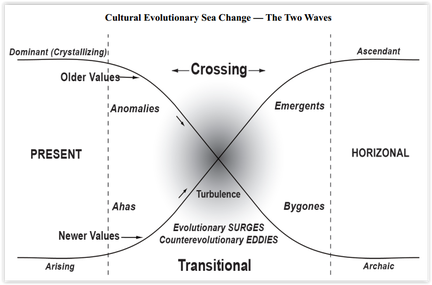 The Association for Global New Thought (AGNT) has initiated a series of online salons based on various topics. The New Thought on the News salon began in January 2018 and occurs monthly at 5:30 PM Pacific daylight Time. I have found this timely and powerfully engaging. I have been involved in the New Thought movement for about eight years now and was initially drawn to it by articles written in the local paper by Rev. Justin Epstein, who was the minister at Unity of Hilton Head at that time. Rev. Epstein had deep connections to Hinduism and particularly to the work Paramahansa Yogananda. I had had a long-standing interest in Hinduism. I also had a decades long involvement with interfaith work. After attending his services for a little while it seemed to me that Unity was an ideal faithpath to promote interfaith understanding. Since my early teens I’ve considered myself an activist, particularly with respect to environmental issues and indigenous rights, and have found it important to keep abreast of the news and issues that most concern me. For much of the time that I have been involved in the New Thought Movement I have encountered resistance to my activist proclivities and my interest in worldly events. A central concept of New Thought is the importance of consciousness in manifesting the world we wish to see. Many long time practitioners of new thought hold that the answer to the problems in the world is through prayer and meditation and that ultimately our task is not to change the world so much as it is to see it rightly. I do agree about the centrality of consciousness in manifested reality, but I also believe that one should stand in their belief and be present as a harbinger of positive alternatives to unsatisfactory circumstances. Only in the last several years have I witnessed stirrings of a different point of view among New Thought adherents. There are now a number of ministries that I am aware of that hold that it is important to remain conscious of what is going on in the world and that when we find ourselves in circumstances where it is appropriate we must stand up and speak out. In fact, last year I attended a marvelous event sponsored by Rev. Darlene Strickland’s Unity of the Blue Ridge with the theme of Our Love Is Power, Standup, Speak Up, Show Up. The choice of Marianne Williamson as a keynote speaker signaled the sincerity of the organizers as change agents. This New Thought on the News salon is based on the premise that we must attend to the news, to the issues in the world, but that we must interpret them from a New Thought perspective, and not accept the slant that is presented to us by the media, which has a vested interest in exploiting fear and uncertainty in order to sell their products. The moderator of this program is Dr. Barbara Fields who serves as the executive director of AGNT, and who served as program director for the first modern Parliament of the World’s Religions in 1993. The inspiration and central reference for this series is a book by Jim Kenney entitled Thriving in the Crosscurrent: Clarity and Hope in a Time of Cultural Sea Change. Mr. Kenney is a longtime friend of Dr. Fields and was global director of the Council for a Parliament of the World’s Religions up to and including the parliament which was held in Barcelona in 2004. There are some preparatory tutorials for this salon based on Mr. Kenney’s book and there are some very useful diagrams provided which clarifies the concepts, click here for links to those materials. Mr. Kenney presents the central concept of the sea change as having four foundations: interdependence, paradigm shift, cultural evolution, and the emerging global consensus of values. His book is rich with visual intuitions and potent metaphors. Among these, in keeping with the idea of sea change, is the notion of cultural values presenting as waves, and that there are periods of transition, where the wave of old values are descending and the wave of new values are arising, and that, necessarily, this period of transition generates turbulence. One of the key understandings of what we are seeing in the news these days in the strident voices calling for a return to older ways, to fundamentalist values, and the demonization of those involved in the ascendancy of these new values, are the manifestation of this turbulence. A choice metaphor of his is that of the “eddy”, which anyone who has ever spent time in a river is familiar with and uses this apt metaphor for the counter motions observable in the general flow of change. Perhaps the overarching theme of Mr. Kenney’s work is that cultural values are inevitably moving ever upwards and outwards, evolving, as they approach the realities that human culture must face. Although he arrived at this viewpoint independently, he frequently references Steven Pinker’s book The Better Angels of Our Nature which presents a great deal of data supporting this view. A prime example of this evolution of cultural values is the institution of chattel slavery, which was universally accepted and defended well into the 19th century, it is now generally recognized that slavery is everywhere and always wrong. Another example is patriarchy, which since the 1960s has rapidly diminished in its scope and power. All of which is not to say that these problems have ended, but that they are rapidly moving out of the realm of issues of central concern. Another key point that Mr. Kenney presents is that although this cultural evolution continually trends upward in the history of our shared world, there are times when this evolution is greatly accelerated. He posits, and I agree, that we are living in just such a time. Regarding the salons themselves, the general format includes an introduction by Dr. Fields of this month’s topic, introductions to guest speakers by cohost Stephen Pope, a recap of the foundational perspectives by Mr. Kenney, followed by presentations and responses by guest speakers and the hosts. The salons are presented via Zoom and those watching the live presentation have the opportunity to chime in and express themselves on the various points presented. Guest speakers have included such luminaries in the New Thought Movement as Dr. David Alexander, Rev. Temple Hayes, Rev. Kevin Ross, Dr. Kenn Gordon thus far; and scheduled for upcoming salons are Dr. David Goldberg, Dr. Roger Teal, and Dr. Michael Beckwith. Click for bios of these and other leaders in AGNT. I am deeply grateful for this initiative by the AGNT which is both timely, deeply engaging and very energizing. I wholeheartedly recommend this salon to readers of this post and suggest that they check out the other salons made available by the AGNT. Click to view previous sessions of the New Thought on the News solons. |
AuthorThis is Jim's Interfaith Blog. Any text which appears in Green also serves as a clickable link. Click on the categories below to filter your view to topics which interest you. Archives
May 2021
Categories
All
|
Site powered by Weebly. Managed by Domain.com

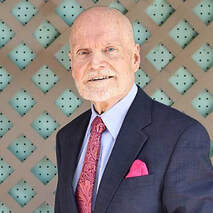

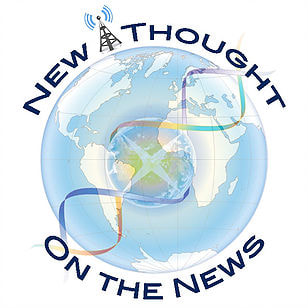
 RSS Feed
RSS Feed